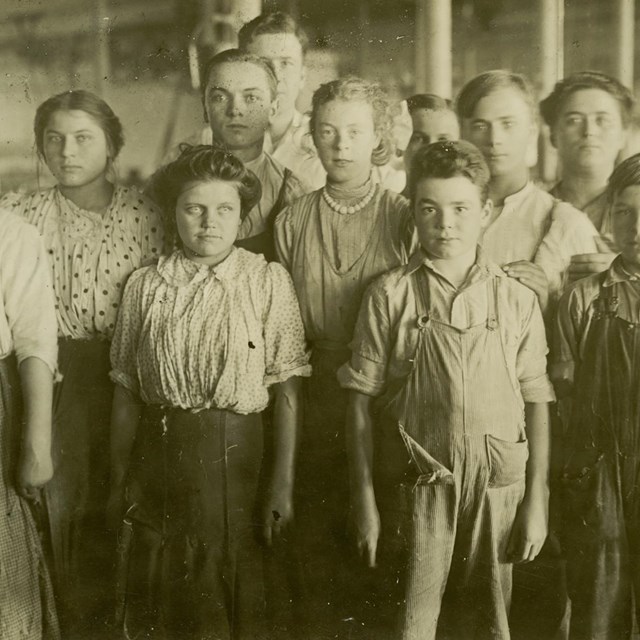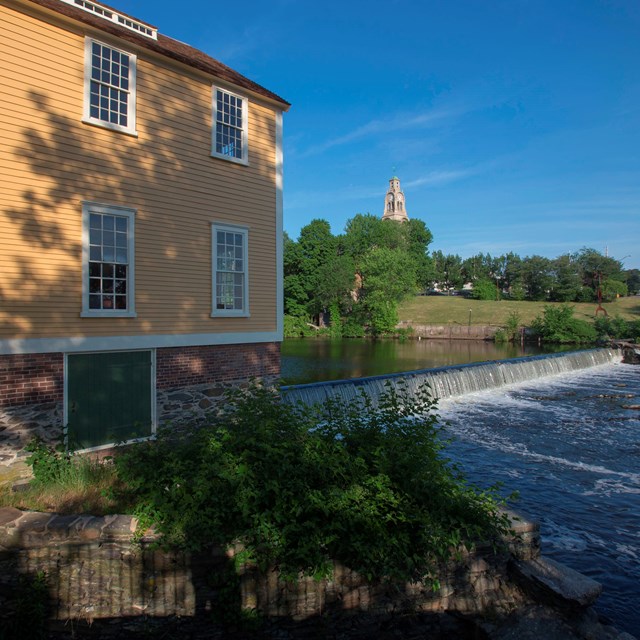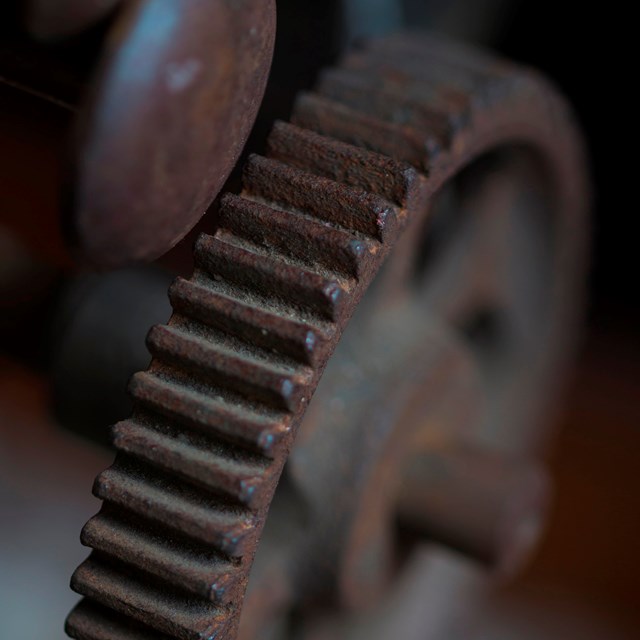|
“Laboring for Freedom: African Americans in the Blackstone River Valley” is a collaborative exhibit created by Stages of Freedom staff and the National Park Service. This exhibit highlights the contributions of Black laborers from Providence to Worcester, with a focus on the early decades of industry up through the Civil War. From the workers who cut the roads that led to Slater Mill, to the self-emancipated fugitives who came to reside in small towns and growing cities, this exhibit covers stories of resilience from across the Valley. 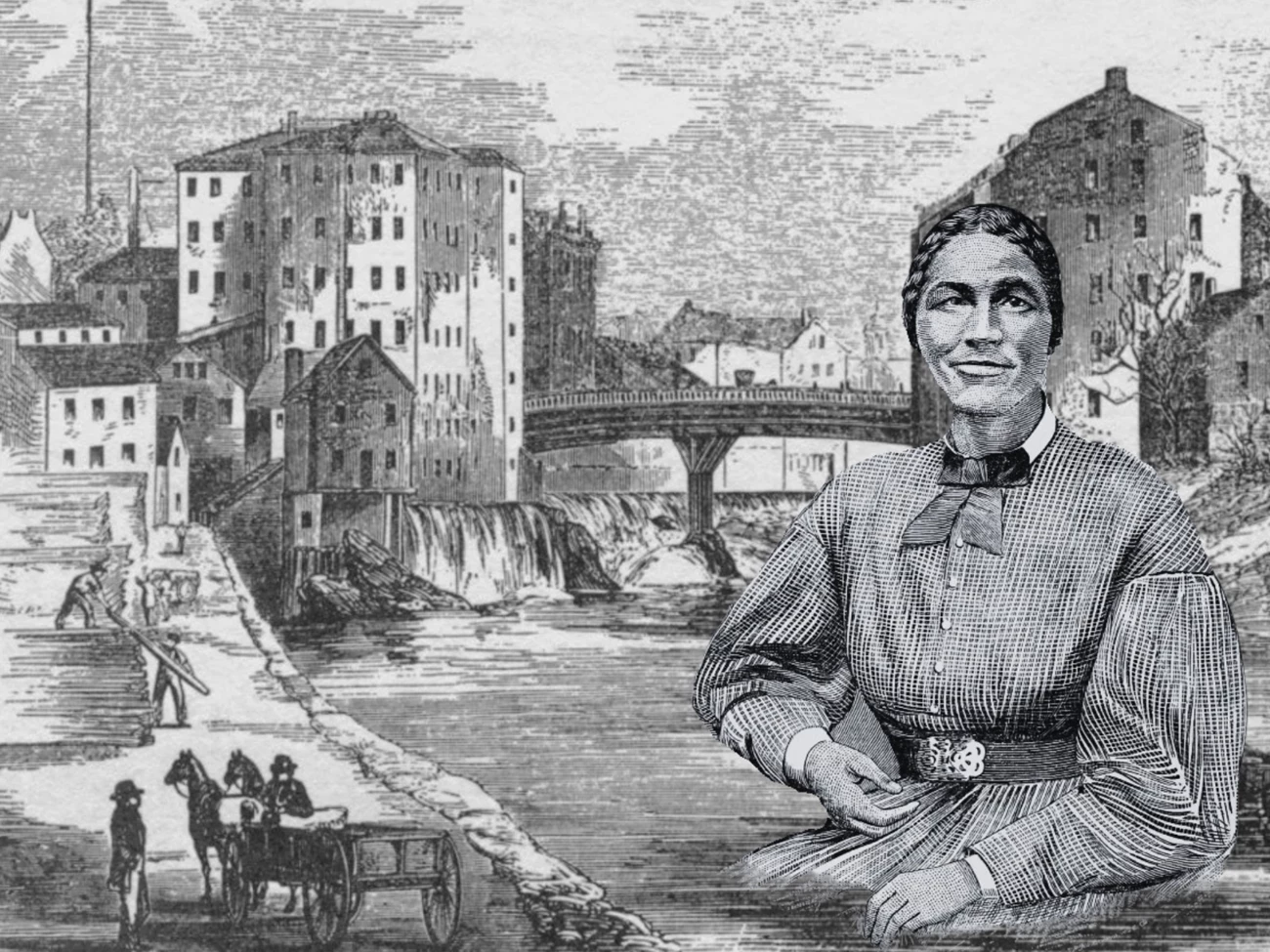
NPS/Horrocks 
Courtesy of Rhode Island Historical Society Cloth & ChocolateThe history of African Americans in the Blackstone River Valley can be told in cloth and chocolate. These products symbolize the industriousness of enslaved and free people. ClothAt Pawtucket’s Slater Mill, children made thread from cotton harvested by enslaved people. The connections to slavery do not end there. Rhode Islanders working in the textile trades also made material for garments worn by enslaved people, called "slave cloth" or "negro cloth." Historian Seth Rockman explains that the broad category of 'negro cloth' "was manufactured and marketed with greater precision. A slaveholder seeking to provide a semi-annual clothing provision had dozens of options, varying by composition, texture, color, width, weight, quality, and price." Few samples of this type of fabric survive today and historians "know little about those who produced these fabrics." Burrillville: Lenard Mason Factory, Nasonville, George W. Marsh Mill, Whipple Mill, Tar Kiln Mill, Sayles Mill, Union Manufacturing Co., Moses Albridge Factory, Harrisville Mill, Peter Place Mill, John T. Phillips Mill, Sales & Shumway Mill, John L. Barbour Mill, John Waterman Mill ChocolateThe William Wheat Chocolate Mill in Central Falls was built by enslaved laborers in 1782. It was the first chocolate mill in America. Intertwined EconomiesThe connections to slavery in the Blackstone Valley go beyond these two products. In Northbridge, MA, shoemakers made 26,000 brogans (coarse, heavy shoes) annually for enslaved people. African heritage people enriched these industries but did not benefit from them.Slavery and Free LaborIn Rhode Island, the birthplace of the American Industrial Revolution, slavery was an essential part of the economy in the 1700s. “Rhode Island played a leading role in the transatlantic slave trade. Not only did Rhode Islanders have slaves—they had more per capita than any other New England state—but they also entered with gusto into the trade.” --Slavery and Justice Exhibit (John Carter Brown Library, Brown University) The treatment of enslaved people included taking their freedom, exploiting their labor, and destroying their cultures, languages, religions, and families - all based in the denial of their humanity. Moses Brown & His MillSlater Mill was tied to slavery from the start. The mill’s investor Moses Brown was part of a Rhode Island campaign to end slavery, but he continued to profit from slavery by trading in cotton. During the experimental phase, when Brown was working to get machines running, one man publicly questioned the fact that cotton came from the bloodied hands of enslaved people. This critic came from within the Brown family. John Brown, a Providence merchant deeply involved in and enriched by the slave trade, wrote of his brother Moses’s venture: This is most certainly a laudable undertaking…but pause a moment — will it do to import the cotton? It is all raised from the labour of our own blood; the slaves do the work. I can recollect no one place at present from whence the cotton can come, but from the labour of the slaves. -- Providence Gazette and Country Journal, February 28, 1789. Rhode Island’s Gradual EmancipationBrown was investing in manufacturing during a period of change. In 1784, Rhode Island passed the Gradual Emancipation Act. Enslaved children would be freed at age 18 if female or 21 if male. Approximately 20% of African Americans were still held in bondage in 1790 due to the provision that emancipation for adults did not need to be immediate. This was the climate in which Almy, Brown, and Slater launched their cotton spinning mill. 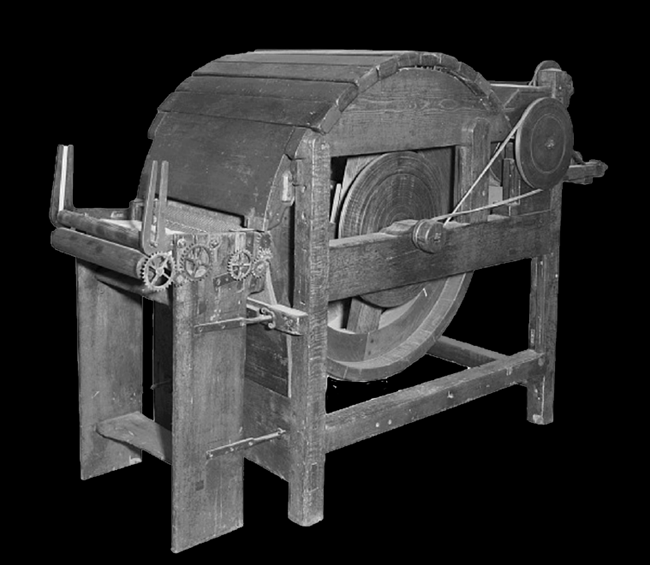
Making the MillMany people rightly associate Slater Mill with child labor, since young people did most of the work inside the spinning mill once it opened in July 1793. Adult Black laborers also made important, if typically overlooked contributions to the formative years of the mill. Black workers cut the roads leading to Slater Mill. Investors also hired Black men to do work on the construction of the mill itself. Some details are sparse, but the logbooks of Almy, Brown, and Slater show payments to “Black Prince” and John Bucklins “for work at Pawtucket.” Slater also hired Sylvester Daby to make baskets to store the mill’s cotton. David Wilkinson, one of the early machinists who worked with Slater, recalled that Prince Hopkins crafted iron work for a carding machine (a device that brushes cotton before it is spun into yarn). Primus Jenckes, the “turning man," provided power for a carding machine “with the muscles of his arms and back” before it was hitched to waterpower. A local grist mill and oil mill near Slater’s operation “were under the direction” of a Black worker called Prince, according to an article in the Pawtucket Gazette and Chronicle. Outside of Pawtucket, Almy, Brown, and Slater also paid local Black workers for additional tasks. Some of these laborers worked from inside their homes: Brister Rhodes, Cudge Brown, Primus Hopkins, Marge Alderedy, Providence Brown, Phebey Shaw, Prince Cushing, and Phillis Alderedy. The early revolutions in the mill system were literally shaped and powered by Black men. Slater Mill would not have been a success without Black workers, but African American adults or children were not generally hired for work inside the spinning mill after these early years.
The Work White Men RefusedIn the 19th century, many people in the Blackstone Valley viewed Black men as unskilled workers regardless of their background or work in a trade. Black men were often limited from developing a craft or career outside of a few lines of work because employers typically only hired them for the menial, manual tasks others did not want to do.
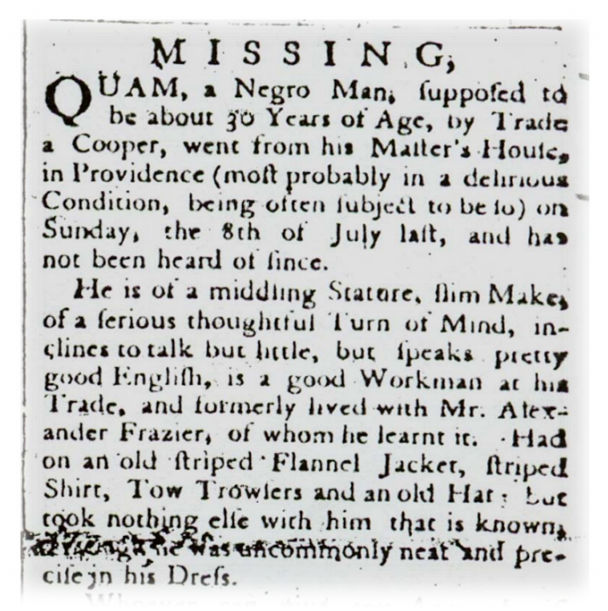
Making a LivingResearchers can find information about Black workers in the Blackstone Valley in the eighteenth and nineteenth centuries in census reports, newspaper advertisements, and even on gravestones. In 1770, Job Smith placed this Providence Gazette runaway ad for a man named Quam. At the time, Quam was missing from his employment as a cooper. He was “a good Workman, at his Trade.” Quam, a Negro Man supposed to be about 30 Years of Age, by Trade a Cooper, went from his Master's House in Providence (most probably in a delirious Condition, being often subject to be so) on Sunday, the 8th day of July last, and has not been heard of since. He is of a middling Stature, slim Make, of a serious thoughtful Turn of Mind inclines to talk but little, but speaks pretty good English, is a good Workman, at his Trade. -- Providence Gazette, August 26, 1770. After the Gradual Emancipation Act, many free Black men found work in the maritime trades. By 1832, a quarter of Black heads of households were mariners. Others worked in the following occupations: cooper, barber, blacksmith, bookbinder, wig maker, weaver, spinner, joyner (a type of carpenter), and shipwright. Some of these jobs and skillsets directly related to outfitting slave ships. Brown UniversityOther evidence of Black laborers’ contributions can be found in architecture. One of the enduring landmarks on the Providence landscape is University Hall, part of the Brown University campus. African heritage people played an important role in the construction of Brown University and this building in particular. In 1770, Southern plantation owners financed the construction of the College Edifice, marring the institution’s foundation with money from slavery. Lopez and Rivera, “one of the largest slave trading firms in Newport” donated the lumber. A free Black man named Mingow helped construct the building. Men named Abraham and Pero also worked alongside men only identified by their enslaver (“Mary Young’s Negro Man;” “Earle’s Negro”). Contemporaries failed to accurately record the names of these workers—a symptom of the culture of dehumanization surrounding enslaved and free laborers of color. Enterprising Men of ProvidenceWhile African heritage people, enslaved and free, rarely benefitted from their work, there were those in the region whose labors allowed them to rise to a level of recognition. Some even achieved a relative level of affluence for their skill, self-determination, and creativity. 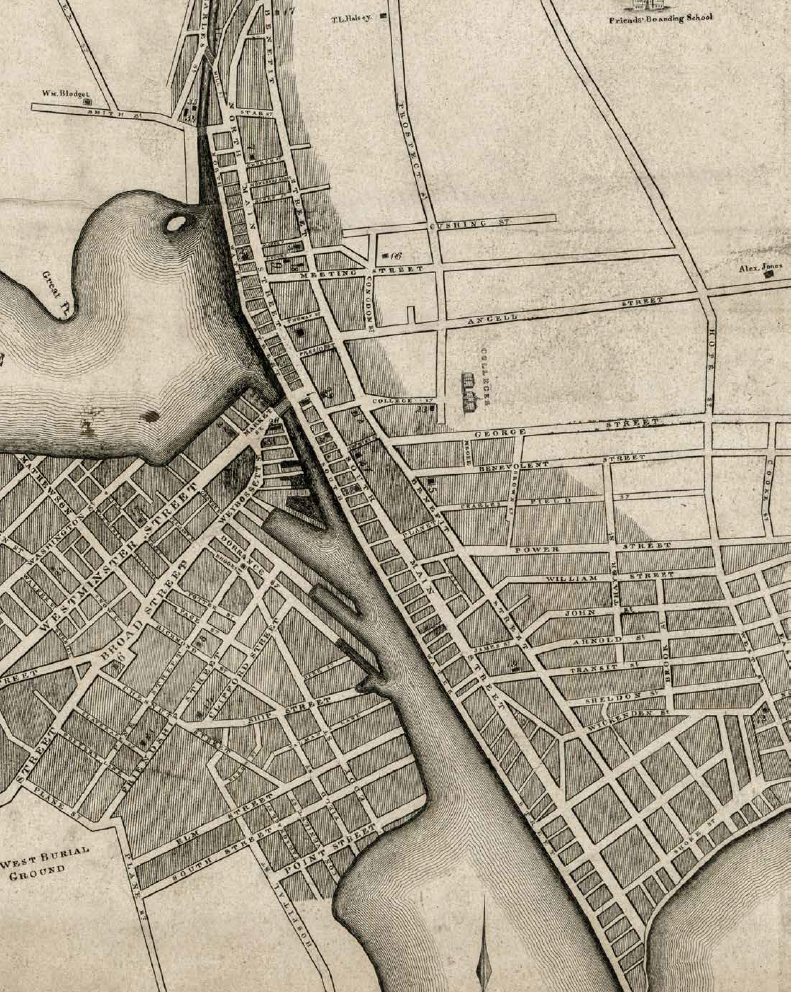
Prince G. WrightAfrican American barbers, such as Alfred Niger, W.G. Kinnicut, and Prince G. Wright, were known as “the waiting men” in Providence. Prince G. Wright advertised his skills as a “ladies gentlemen’s fashionable hair-dresser” in local newspapers. Wright had “the most profound respect” for clients and encouraged readers (“enlightened citizens”) to appreciate his “indefatigable Endeavors” and not “slight his offered Exertions; because proffered by one of his…Hue.” Outside of Providence, a number of Black men, including George Henry, James Henry, and Horatio Foster, all worked as hairdressers in Pawtucket in the mid-to-late 1800s. Emmanuel Manna BernoonEmmanuel Manna Bernoon, a free Black man, made a name for himself outside of the tonsorial trade (hairdressing and shaving) while working in hospitality. Bernoon opened the first oyster and alehouse on Towne Street in Providence in 1736. He “sought the heart of the softening town by way a gratified and contented stomach.” Later, Bernoon launched a catering business and tavern. 
Courtesy of the Rhode Island Historical Society George McCartyGeorge McCarty, a free Black man, was also successful in the hospitality business. McCarty ran a refreshment stand “at the North-West corner of the Market-House” in Providence. During warmer months, McCarty promised to “keep on hand as great a variety” as possible. In the summer of 1833, McCarty placed advertisements in The Liberator, a newspaper for abolitionists, to sell “houses & lots in Providence.” McCarty was selling his house “in one of the most pleasant [areas]” of Providence. His home had “a most delightful prospect of the town and the adjacent country” and McCarty was also offering five additional house lots. All of his dwellings were “free from encumbrances.” McCarty’s property ownership was a factor in his decision to become politically active. McCarty pushed for integrated schools and suffrage for Black property owners. George HenryThe formerly enslaved George Henry resided in Providence by 1840. Henry worked as a skilled mariner, church sexton, gardener, whitewasher, street waterer, and general laborer. His memoir, Life of George Henry, Together with a Brief History of the Colored People in America, illuminates the multiple skills and jobs an African American had to manifest to attain any economic success. Henry amassed a large library of rare books. Upon his death, his collection was bequeathed to Livingstone College, a historically Black school in North Carolina. Thomas HowlandThomas Howland was the first person of color in Rhode Island to hold public office. Voters elected him warden for Providence’s Third Ward in 1857. A stevedore by trade, Howland undertook the backbreaking work unloading ships of cargo on the Providence wharfs. William J. BrownWilliam J. Brown, a shoemaker in Providence, wrote of numerous occasions when employers tried to trick him out of his wages, assuming he would not protest. Brown published a memoir about his life in Rhode Island in 1883.
Life in the Blackstone ValleyOn the eve of the American Revolution, there were 74 free Black people living in Cumberland, 19 in Glocester, 303 in Providence, and 51 in Smithfield. There were 252 persons of color living in Worcester County around the same time, in 1764. Sutton and Worcester were home to the largest populations of people of color, though these communities were still relatively small (about 33 people in all). Through the end of the 18th century, and well into the 19th century, African heritage people in the Blackstone Valley were centered in Providence. Smaller numbers lived elsewhere in rural communities such as Uxbridge, Massachusetts and others in cities such as Pawtucket, Rhode Island. In rural communities such as Upton, free Black workers such as Elihu Oatley carved out a living. Oatley “supported himself and his mother by making shoes.” Freedom Seekers and Local LandJames Brayton, who was born in Newport, was among the Black men who sought freedom in Smithfield, Rhode Island. James and his wife Lucy lived on Great Road. From the time of the American Revolution through the 1960s, generations of family members lived in the home. During a town meeting in 1783, residents expressed their distaste for the slave trade, “being impressed with a sense of the iniquity and inhumanity of the practice of enslaving the human species, and being fully convinced of this standing truth that all men are born to an equal right to liberty.” In Glocester, Rhode Island, Yockway Fenner worked as a Black farmhand. By 1777, he was also a wanted man. Fenner freed himself from his master during the War of Independence. Standing 5’8” tall, Fenner left with “a light cloth colored homespun coat, made plain, with wooden buttons” and a number of other items of clothing. Fenner’s master placed advertisements for his return for months. Both Cato and his mother freed themselves from servitude. Pearce first went to Providence and found work at sea. Upon his return, Pearce struggled to find acceptance within many churches, though he eventually became a preacher. In 1842, Pearce’s life story (A Brief Memoir of the Life and Religious Experiences of Cato Pearce, A Man of Color: Taken from His Lips and Published for His Benefit) was published in Pawtucket by an abolitionist, likely Ray Potter, a leader of the Pawtucket Anti-Slavery Society. Fenner, Pearce, and others were of course not alone in their precarity. Even when African Americans attained financial security, property, and position, there was always the threat that it could be taken away. In Providence, Black settlements were concentrated in Snowtown, Hardscrabble, and Grotto Avenue. In 1824, white rioters destroyed the homes of about 20 Black families. The Snowtown Riots of 1831, led by a similar mob, resulted in the loss of even more Black homes in the city. 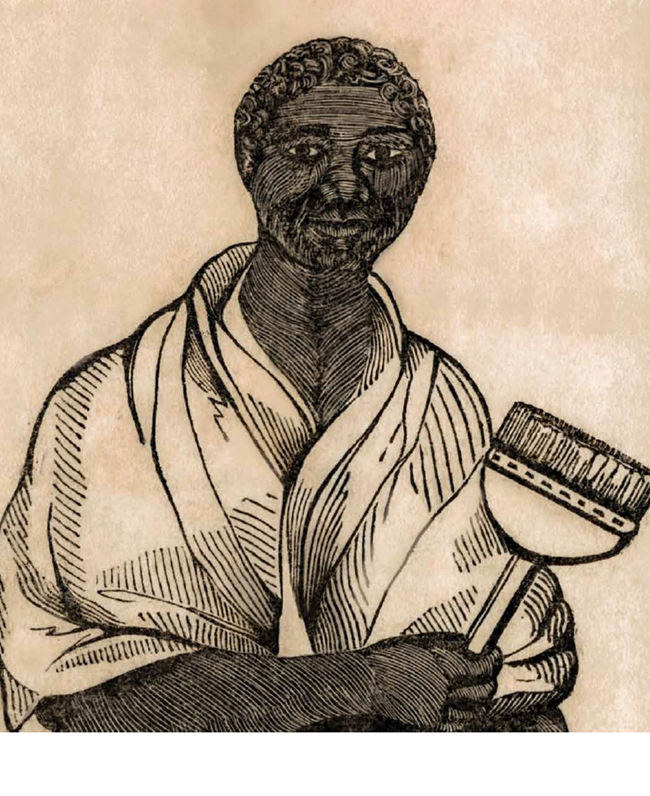
The Case of Elleanor EldridgeAn accomplished weaver, dairy maid, whitewasher, laundress, and wall-paperer, Elleanor Eldridge devoted herself to work. In 1827, a white resident stole the property she owned on Spring Street. Eldridge was one of the first Black women to represent herself in court. She entered a lengthy legal battle to regain her home and published her memoirs to pay legal fees. Eldridge rightfully reclaimed what was hers. The WillardsSome families of color were able to maintain land and leave a lasting legacy in their communities. In the 1830s, Cato Willard laid out plans for a residential street in Woonsocket. Lydia Brayton Willard, who was widowed in the mid-1830s, continued the work to make new lots along Cato and Church Streets in the 1840s. Lydia lived as a free head of household in Uxbridge, MA. Her son, who worked as a blacksmith, also lived in town. The Cato Hill Historic District in Woonsocket was added to the National Historic Register in 1976. Generations of working people, including many families of immigrants, have made their homes on the streets first laid out by the Willards. Henry JohnsonInto the 20th century, people in the Blackstone Valley might encounter living reminders of the legacies of slavery. A free Black man named Henry Johnson lived for many years near Wallum Lake in Burrillville, Rhode Island. Johnson was born in Virginia on December 25, 1834 and was enslaved for over 30 years. Later in life, Johnson recalled that he “shook the hand of Abraham Lincoln…after he had been freed from slavery.” Johnson lived to be 109 years old and died in February 1944. His final years were spent in the Rhode Island State Sanatorium, also in Burrillville. This photograph of Johnson was taken as part of a series for the U.S. Works Progress Administration.
Abolition NetworksPrior to the Civil War, activists in some communities in the Blackstone Valley provided a surprising welcome to those fleeing slavery. Under cover of night, runaways found sanctuary in safehouses along an invisible route called the Underground Railroad. Elizabeth Buffum ChaceElizabeth Buffum Chace’s house in Valley Falls offered sanctuary to fugitives and gathered likeminded abolitionists, such as Frederick Douglass and Sojourner Truth, who spoke there on several occasions. 
Pidge TavernIn 1934, Samuel Swan Pidge recalled that his father and grandfather helped hide “fugitives in the Pidge House stables.” Runaways arrived at the Pidge Tavern in Pawtucket at sundown and hid for one full day before heading out again at nightfall. WoonsocketIn March 1860, presidential candidate Abraham Lincoln visited Woonsocket, Rhode Island. He gave a rousing speech at Harris Institute, now the site of City Hall. A journalist for the Manufacturers and Farmers Journal noted that Lincoln “made one of his most powerful addresses, which was received with great applause.” Lincoln had recently made his “Cooper Union Address” in New York, a strong stand on the issue of slavery. Lincoln ended that speech with the line: “let us have faith that right makes might, and in that faith, let us, to the end, dare to do our duty as we understand it.” 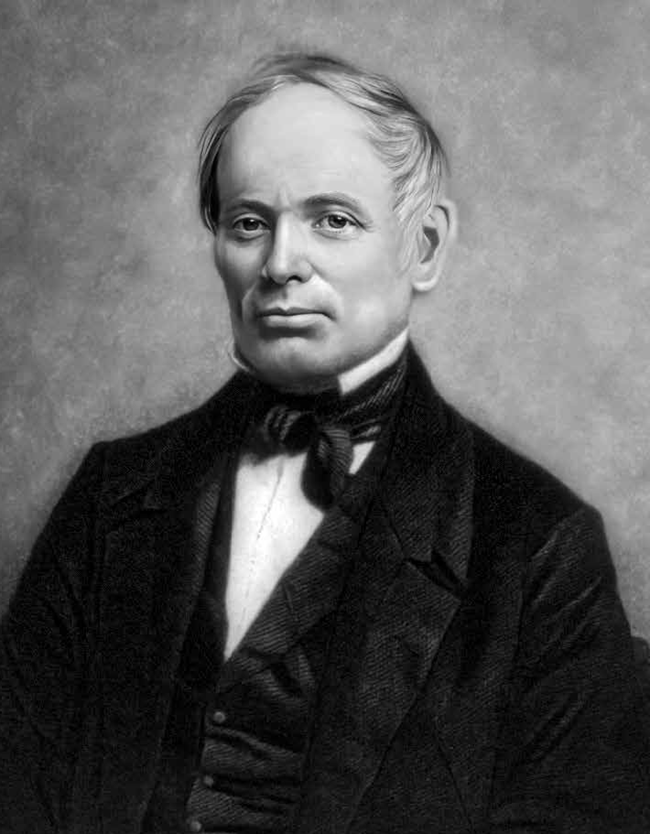
Retouched by NPS/Pearson Adin Ballou & HopedaleHopedale, an abolitionist stronghold founded by Rev. Adin Ballou in the 1840s, was another haven for fugitives from slavery. It was also a destination for Black anti-slavery activists from across the country. In 1910, Anna Thwing Field recalled that enslaved people came to the community in her childhood and “lived among us for weeks or months.” In one home in Hopedale, “a man, woman and two children, all black, dwelt one winter in the cellar kitchen and one summer in the attic.” Henry “Box” Brown, William and Ellen Craft, Frederick Douglass, and Sojourner Truth paid visits to the community to give lectures to the residents and other local abolitionists. Hopedale also hosted an annual celebration of the Emancipation of the West Indies at Nelson’s Grove. This celebration attracted both well-known and unknown abolitionists and fugitives from across the country. Despite the strong abolitionist leaning of many residents, Hopedale remained a predominantly white community for many decades. Activists in Blackstone, MassachusettsOutside of Hopedale, groups of abolitionists occasionally rallied for fundraisers or fairs in support of abolition. In 1848, abolitionists in Blackstone, Massachusetts and surrounding towns hosted a Convention. Their meeting in the Blackstone Block was “held on a Sunday marking it as part of the abolitionists’ ongoing protest of Sabbath laws.” Maria L. Southwick, a young resident of Mendon, MA, served as the Secretary. Southwick also took on the work of defending the event against a local resident who published a “mocking account” of the day in the Boston Daily Atlas. Three years later, abolitionists gathered once again for their Great Union Anti-Slavery Fair. One advertisement meant to encourage fair-goers declared: “Friends of Freedom! Let the rich display of articles, the soul-stirring music and united eloquence of Old New England Bring together the largest meeting ever held in the valley of Blackstone!” These events, one hosted before and one after the passage of the Fugitive Slave Act suggest that there was a small, active group of abolitionists. If fugitives sought freedom here, they did not stay and find a home. There were 11 free people of color in Blackstone in 1850, including a man who worked as a barber in town. That number was two in 1860. Lydia Maria Child, another noted abolitionist, explained that a person of color, “however intelligent, is not allowed to pursue any business more lucrative than that of a barber, a shoe-black, or a waiter.” Child concluded: “no other people on earth indulge so strong a prejudice with regard to color, as we do.” 
Battling for the BallotOne of the best-known abolitionists of the 19th century, Frederick Douglass, also spent time in the Blackstone Valley. Douglass toiled in a different way for racial justice during the Dorr Rebellion. In 1841 and 1842 he campaigned for Black voting rights, honing his skills as America’s leading voice of abolition. In the Valley he stumped in Woonsocket, Providence, and Smithfield and “stole the hearts of the Rhode Island people.” In Glocester, Rhode Island, Acote’s Hill was the site of an “armed but bloodless” confrontation between Thomas Wilson Dorr’s “People’s Rights” faction and Samuel Ward King’s “Law & Order” party in June 1842. That summer, 3,500 men, including 200 Black volunteers, marched to attack the Dorrites entrenched there. Other African Americans volunteered to operate the Providence fire departments while the men were on campaign. The Providence Journal reported: “THE COLORED POPULATION of our city, have come forward in the most honorable manner, and taken upon themselves the charge of the fire engines. They have pledged themselves to assist in the protection of property from fire and plunder, while the other inhabitants are engaged in the defense of the state.” Douglass explained: “We cared nothing for the Dorr party on the one hand, nor the ‘law and order party’ on the other. What we wanted, and what we labored to obtain, was a constitution free from the narrow, selfish, and senseless limitation of the word white.” Black suffrage remained limited in Rhode Island even after “Dorr’s War.” 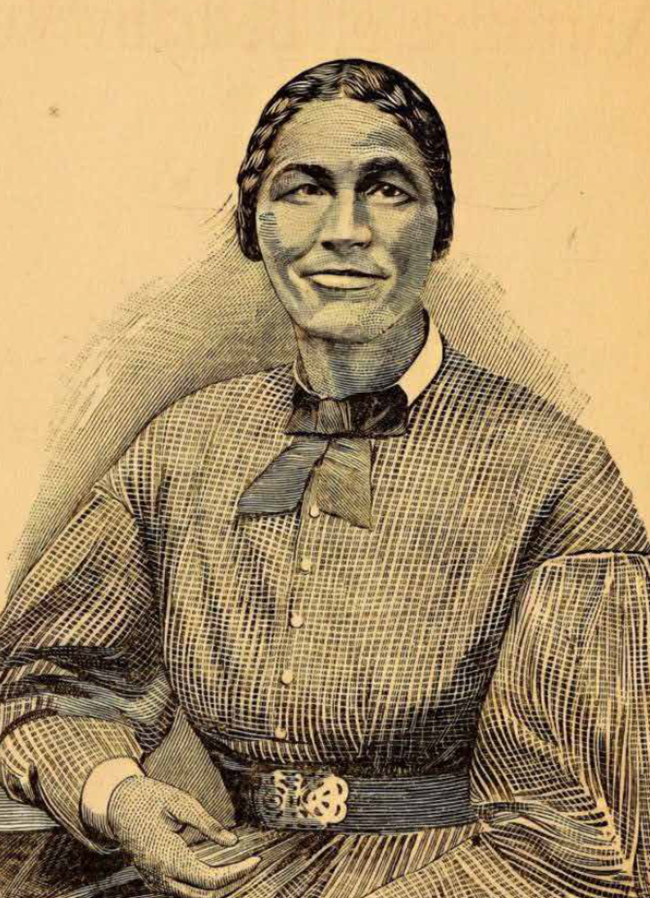
Writing for FreedomLocated at the north end of the Blackstone watershed, Worcester, Massachusetts, has the unique distinction of being home to eight authors who penned slave narratives. These autobiographies offer an understanding of Black culture and consciousness. They provide a vivid sense of what it felt like to be a slave, living in constant fear, and being alienated from family, friends, community, and self. John ThompsonWhen asked to put the “main facts” of his life “into permanent form,” John Thompson felt he had first “to discover what had been said by other partners in bondage.” He eventually wrote of life in slavery as “a hell on earth.” The Life of John Thompson, A Fugitive Slave (1856) Bethany VeneyBethany Veney wrote about making friends in Worcester and her choice to “cast in my lot with them.” Veney attended the Park Street Methodist Church and worked hard to become “comfortable” in the city, eventually owning a small house at 21 Tufts Street. The Narrative of Bethany Veney, A Slave Woman (1889) Isaac MasonIsaac Mason moved to Worcester in 1850 and “concluded to remain in Worcester, Mass., or I may say to make it my home, as I had not found a place in preference.” Mason “found plenty of good employment and benevolent sympathizers” in Worcester. It was the place he decided (in his own words) to “dwell until the end of my days.” 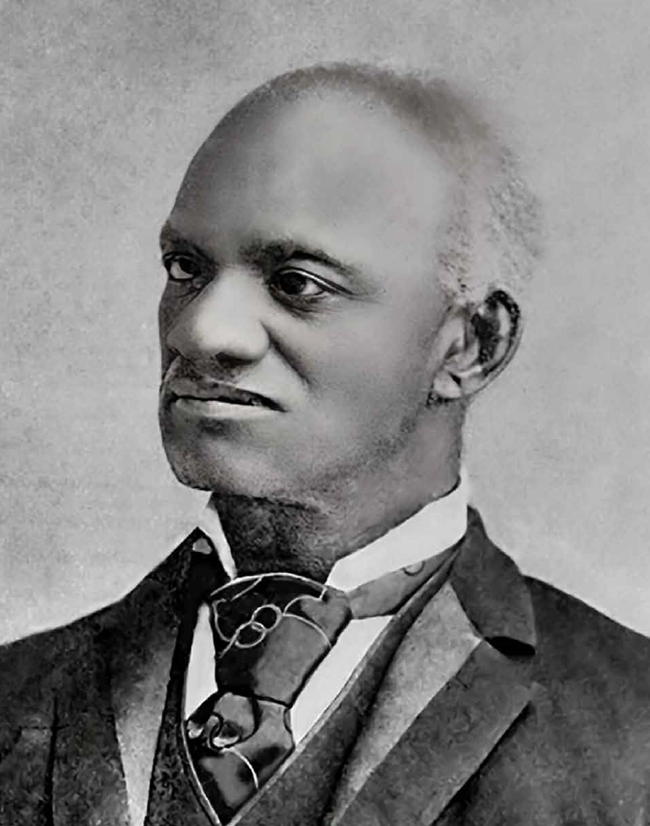
Allen ParkerKnown to Worcester children as “Pop,” Allen Parker was seldom seen “without a basket hanging on his arm, which contained popcorn and homemade candies” to sell in local schools, factories, and offices. Parker became “one of the best-known colored men in Massachusetts.” Allen Parker, Recollections of Slavery Times (1895) Jacob StroyerAnother freeman who came to Worcester was Jacob Stroyer. Stroyer arrived in 1869 and “studied quite awhile in the evening schools at Worcester, and also a while in the Academy of the same place.” Stroyer served as a preacher at the African Methodist Episcopal church in Worcester. Later, he became a Deacon in Rhode Island. Jacob Stroyer, Sketches of My Life in the South (1879)
|
Last updated: May 25, 2025

